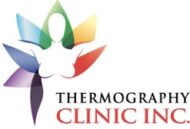Young Women and Breast Cancer
Alexander Mostovoy, D.H.M.S.,BCCT Younger women generally do not consider themselves to be at risk for breast cancer. Statistics however show that breast cancer is the most common cause of death in women aged 35-54 and the incidence continues to rise. About a quarter of all breast cancers diagnosed this year will be diagnosed in women before menopause. We have also observed this increase at our clinic in women under the age of 50. What is different about Breast Cancer in younger women? Younger women generally have denser breast tissue than in older women. By the time a lump is felt in a younger woman’s breast the cancer is usually in an advanced stage and therefore is less likely to be treated effectively. Rick factors involved in Breast Cancer • Medical radiation exposure and especially exposure at younger age |
Lack of Screening
The high prevalence rate among younger women may reflect the lack of routine screening and due to low compliance of Breast self Examination (BSE) among this age group.
Nonetheless, an effective way of screening is available in the form of medical infrared thermography. Thermography becomes essential in helping many young women identify who is at a higher risk of developing breast cancer by assessment of how the breast functions. By identifying a high risk group early we can follow this group more vigilantly and when necessary escalate to other forms of testing which would involve structural tests like, Ultrasound, Mammography, and MRI.
Once the initial baseline is established it is possible to track future changes in the breast tissue and use all subsequent examination results as an early warning system. According to a number of researchers, a persistent abnormal thermogram is thought to be “the single greatest indicator of breast cancer risk” and is considered 10 times more important than a positive family history for the disease. Because physiological changes over time are known to precede morphological changes, an abnormal thermogram can often be the first warning sign of an increased risk for breast cancer. Different factors may be contributing to a high risk (abnormal) thermogram, such as: hormonal imbalance, early angiogenesis (proliferation of blood vessels), lymphatic swellings and poor function, thyroid dysfunction or other endocrine disorders, environmental toxins, emotional stress, just to name a few; these are important contributors to breast disease and malignancy and are not detected by mammography or ultrasound as these factors do not appear as structural changes.
Can breast cancer be prevented?
According to The World Health Organization 70% of all cancers can be prevented. Every woman should know her risk level for developing breast cancer. With proper risk assessment, that includes different testing modalities, the patient is able to determine her risk factors and develop an action plan on how to improve the breast tissue or even reverse the existing trend. The current mainstream screening strategy is not applicable to younger women, as it does not identify who is at risk before it is too late. Medical infrared thermography should be added to every woman’s regular breast health care because the earlier and younger, the better.

